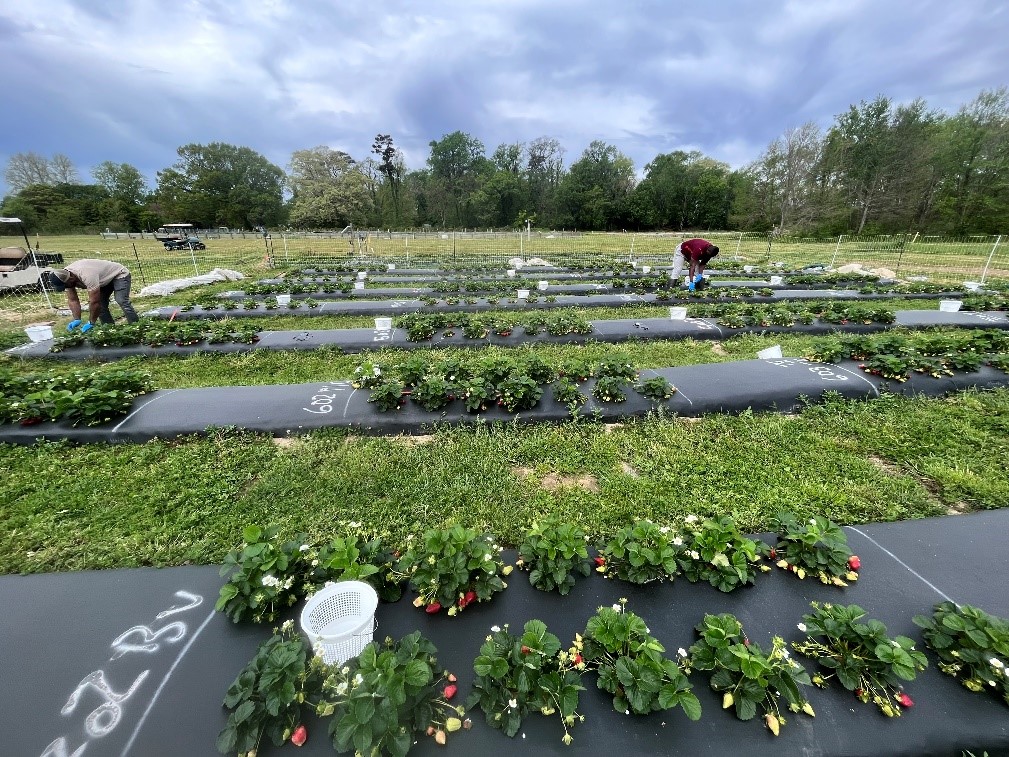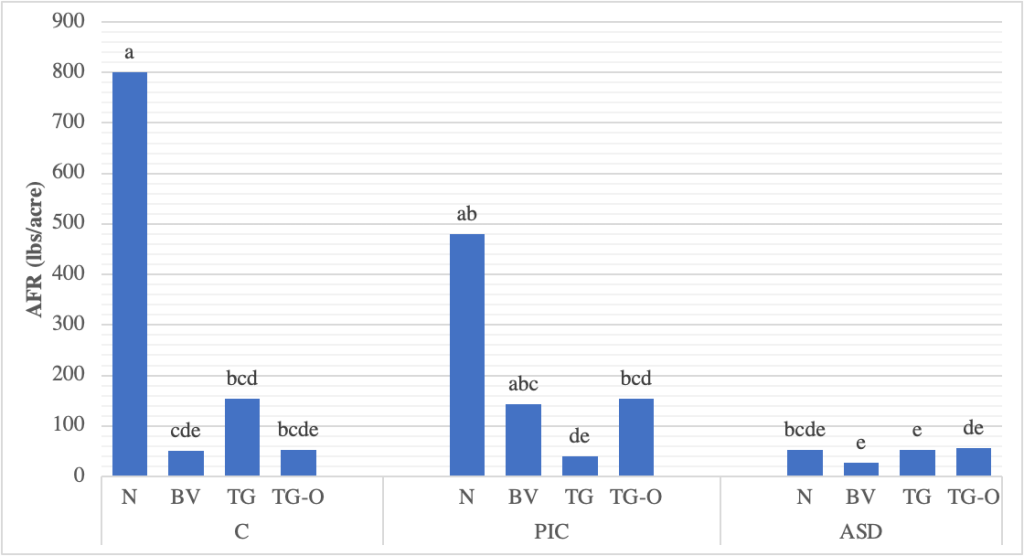Baker D. Aljawasim, Patricia Richardson, Gabriel Yeboah, and Jayesh B. Samtani, Hampton Roads AREC, Virginia Tech; Chuansheng Mei, Robert L. Chretien, and Scott Lowman, The Institute for Advanced Learning and Research, Danville, VA
The south-Atlantic region of the United States, including the Commonwealth of Virginia, ranks third in the production of fresh market strawberries after California and Florida. Most growers in the region use the annual hill production system. In addition, the south-Atlantic region of the United States produces 2,342 acres of strawberries, with an average yield of 13,979 lb/acre and a total farm gate value of $47,158,000. The strawberry plant is highly susceptible to a large variety of soil-borne pathogens, including Colletotrichum spp., Verticillium spp., and Phytophthora spp., which are considered the most damaging pathogens on this crop in the United States. Anaerobic soil disinfestation (ASD) is an alternative method for chemical fumigation that shows great promise to control diseases in strawberry production systems. Endophytic bacteria, such as Bacillus spp., are important biocontrol agents due to their capacity to reduce the growth of pathogens such as fungi, bacteria, and nematodes while also promoting plant growth. We proposed that using ASD and endophytic bacteria will reduce diseases such as anthracnose fruit rot and increase the yield of strawberries in the annual hill plasticulture production system.
In the 2022–23 strawberry growing season, a trial was conducted at the Hampton Roads AREC, Virginia Beach, VA, and strawberry plug plants from ‘Chandler’ were planted in various treatments as stated below: non-disinfested beds (Control); Pic-Clor 60 beds at 175 lbs/A (preplant soil fumigant) (Pic); ASD treated beds. Additionally, strawberry plants in each of these main treatments were treated with one of the following sub-treatments: Bacillus velezensis only; TerraGrow (a mixture of five Bacillus spp.) at 1.5 lbs/A only; and TerraGrow at 1.5lbs/A plus Oxidate 5.0 (27% hydrogen peroxide and 5% peroxyacetic acid) at 2500gal/A. TerraGrow and Oxidate 5.0 were applied three times in the fall season followed by three times in the spring season and the B. velezensis treatment was applied two times in the fall followed by two times in the spring. Four plots/replicates of 14 plants each were used for each treatment. The berries were harvested twice per week from March 31 through June 16, 2023 (Photo 1).

At each harvest, fruits from each plot were graded as marketable and nonmarketable. The nonmarketable category included small (<10 g), deformed, damaged fruits from insects and birds, and diseased fruits. Fruits that were infected with AFR were weighed separately. Fruits were weighed after grading, and yield is presented as lb/acre. The total yields were calculated by adding the marketable yield to the non-marketable yield.
For anthracnose fruit rot (AFR), in non-disinfested soil treatment, the weight of diseased fruits decreased significantly in plots treated with B. velezensis, TerraGrow, and TerraGrow plus Oxidate by about 93%, 80%, and 93%, respectively, compared with the untreated control. In general, the ASD treatment reduced the weight of the diseased fruits with AFR by about 93% compared to the non-disinfested control and 89% compared to the Pic-Clor 60 fumigation treatment (Fig. 1). AFR on strawberries was controlled without using any chemical fungicide during the field production cycle by using Bacillus spp. as biocontrol agents. This bacterial species has the ability to reduce mycelial growth, conidial germination, fruit decay development, and disease severity. Further, the application of ASD may involve the production of organic acids and other biologically active volatiles that have antifungal properties. However, the total yield in the ASD treatments was 15,496 lb/acre, which was significantly lower than the Pic-Clor 60 fumigation of about 21,902 lb/acre and the untreated control treatments of about 19,229 lb/acre (Fig. 2). The application of ASD with endophytic bacteria may be a helpful plant disease control strategy for organic growers, small farms, growers with limited resources, or growers experiencing pest issues in buffer regions prior to strawberry transplanting. We are repeating this work for another growing season.


Acknowledgments: We would like to thank the Northeast Sustainable Agriculture Research and Education (SARE) program for funding this project.